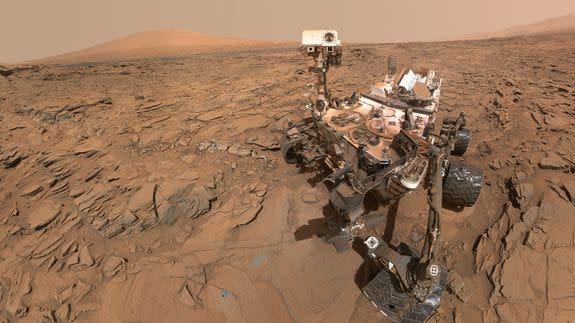NASA's Curiosity rover can now fire its laser on its own. What could possibly go wrong?

Fire away, Curiosity.
NASA's intrepid Curiosity rover on Mars now has the ability to choose an interesting rock target and fire its scientific laser at it autonomously.
Yep, that's right.
A car-sized rover can select a rock it wants to shoot with a laser and then actually fire it all without human intervention.
SEE ALSO: Latest Curiosity rover selfies show off Mars' red surface
Curiosity isn't just firing its laser for fun, either. The plasma produced from the zapped rock helps scientists learn more about exactly what the target is made of.
The rover's new autonomy is made possible by using software that helps Curiosity pick out rock targets based on brightness and size parameters laid out by scientists ahead of time, according to NASA.
"This autonomy is particularly useful at times when getting the science team in the loop is difficult or impossible — in the middle of a long drive, perhaps, or when the schedules of Earth, Mars and spacecraft activities lead to delays in sharing information between the planets," NASA robotics engineer Tara Estlin, said in a statement.

Image: NASA/JPL-Caltech
In total, Curiosity has fired its laser — which is part of the rover's ChemCam instrument — more than 350,000 times at about 10,000 targets, NASA said. The rover's new autonomy will allow scientists to examine even more rocks using the instrument than before.
The software actually makes it easier for Curiosity to hit its rock targets.
"Due to their small size and other pointing challenges, hitting these targets accurately with the laser has often required the rover to stay in place while ground operators fine tune pointing parameters," Estlin added.
Now, the software helps with identifying and pointing at targets, allowing Curiosity to hit the rocks on its first try and save everyone some time.
Curiosity went through a bit of a scare earlier in July.
The rover entered an unexpected "safe mode" after some kind of software malfunction occurred involving image data storage, NASA said. Curiosity — which landed on Mars in 2012 — now seems to function well.
